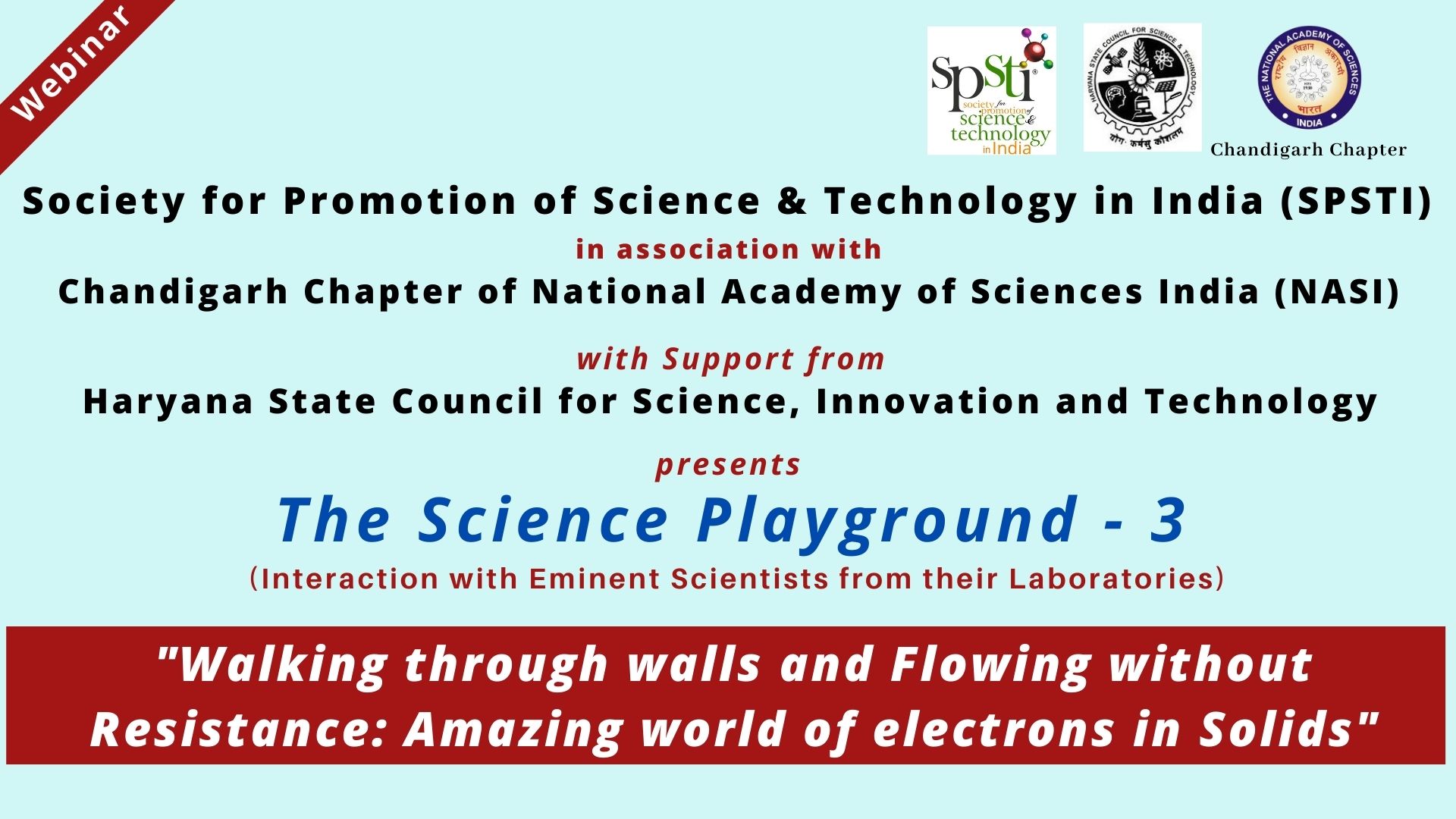A playground is a place to move, explore and enjoy. The laboratory is the scientist’s playground, one which a young student can identify with! However, budding scientists studying in our schools and colleges seldom ever get an opportunity to see the workings of any research laboratory. To bridge this gap, some eminent science communicators of the region conceived of a new web series called “The Science Playground”. Lecturing and interacting from their laboratories will be very eminent young scientists of the country. The third in the series of these expository lectures was presented by Prof. Pratap Raychaudhuri from the Department of Condensed Matter Physics and Materials Science, Tata Institute of Fundamental Research, Mumbai and awardee of S. S. Bhatnagar Prize in Physical Sciences, 2014.
The series is organized by the Society for Promotion of Science & Technology in India (SPSTI) in association with Chandigarh Chapter of National Academy of Sciences, India (NASI) and is supported by the Haryana State Council for Science, Technology & Innovation, Govt. of Haryana. The lecture was live from Zoom platform with more than 45 attendees and more than 595 viewed on the Facebook page of SPSTI from various places all over the country.
The session steered with the introduction by Prof. Keya Dharamvir. The opening remarks were presented by Prof. Arun K. Grover, Former Vice Chancellor of Panjab University and Vice President of SPSTI. Dr. Goutam Sheet Associate introduced the speaker Prof. Pratap Raychaudhuri.
Prof. Raychaudhuri presented his talk on “Walking through walls and flowing without resistance: Amazing world of electrons in solids”. Dr. Raychaudhuri was very interactive making use of various animated slides, diagrams and graphs to elaborate the concepts. His talk focused on quantum tunnelling, the unexpected behaviors of electrons in solids as solids have many electrons and collectively the behavior of these electrons is very different from the behavior of sum of isolated electrons. Quantum mechanical tunneling is a tool to understand the unusual behavior of electrons in solids. He explained the tunneling and electron as particles and waves with simple examples of a squash game and shooting through a canon. He explained how during tunneling the intensity of wave decreases due to barrier in the path. He discussed the work of Nobel laureates Leo Esaki and Ivar Giaever who discovered tunneling phenomenon in semiconductors and superconductors respectively and Brian Josephson for his theoretical predictions of properties in a super current flowing through a tunnel barrier. He explained their work in detail. He also explained that phase coherence leads to zero resistance and also the Meissner-Ochsenfeld effect. The two properties of superconductors have their application in MRI machines and Maglev trains in Japan. He further discussed the Bose Einstein condensation and the resulting fountain effect. He also elaborated on Bardeen Cooper Schrieffer theory where current of electron pairs flows without resistance in certain materials at low temperatures. He discussed the work of Ivar Gaviern where tunneling can be used to identify the change in density of states. He also shares the TIFR milli-Kelvin scanning tunneling microscope which can be used to image the various solid surfaces to their atomic level. He also discussed hexatic fluid which has properties in between solids and liquid, i.e. having ability to flow but along preferential direction. He also shared videos from his laboratory of various experiments conducted.
The talk was appreciated by an audience of educationists, scientists, students, and teachers. Questions and discussions included the use of incubators between metals and superconductors and application of these experiments in real life. The session ended with a vote of thanks by Keya Dharamvir. There are many other talks and activities organized by SPSTI, details of the same can be obtained from SPSTI website.

